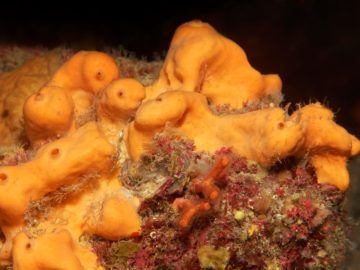Shi En Kim in Smithsonian:
 More than two decades ago, when Elizabeth Turner was still a graduate student studying fossilized microbial reefs, she hammered out hundreds of lemon-sized rocks from weathered cliff faces in Canada’s Northwest Territories. She hauled her rocks back to the lab, sawed them into 30-micron-thick slivers—about half the diameter of human hair—and scrutinized her handiwork under a microscope. Only in about five of the translucent slices, she found a sea of slender squiggles that looked nothing like the microbes she was after. “It just didn’t fit. The microstructure was too complicated,” says Turner. “And it looked to me kind of familiar.”
More than two decades ago, when Elizabeth Turner was still a graduate student studying fossilized microbial reefs, she hammered out hundreds of lemon-sized rocks from weathered cliff faces in Canada’s Northwest Territories. She hauled her rocks back to the lab, sawed them into 30-micron-thick slivers—about half the diameter of human hair—and scrutinized her handiwork under a microscope. Only in about five of the translucent slices, she found a sea of slender squiggles that looked nothing like the microbes she was after. “It just didn’t fit. The microstructure was too complicated,” says Turner. “And it looked to me kind of familiar.”
Turner had an inkling of what the textured surfaces could represent. But as an early-career academic then, she withheld her findings so as not to cause a stir. After several return trips and a slew of publications by other researchers earlier this year on similar-looking fossils, Turner, now a field geologist at Laurentian University, is finally ready to step forward with her discovery: The spangled stones she found are sponge fossils dated at 890 million years old, placing sponges as the earliest prehistoric animal that humanity has ever found so far. Published today in the journal Nature, her findings suggest that animals popped up long before Earth was considered hospitable enough to support complex life. “It’s a big step forward,” says Joachim Reitner, a geobiologist at the University of Göttingen in Germany who wasn’t involved in the study. Like Turner, he’s convinced that the fossils are sponges, because the complexity of the craggy curlicues rules out all other bacterial or fungal candidates. “We have no other choices,” he says.
